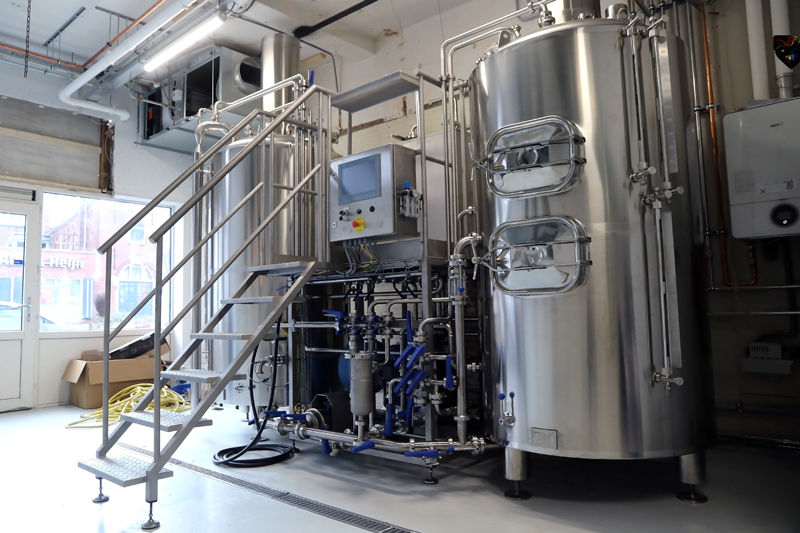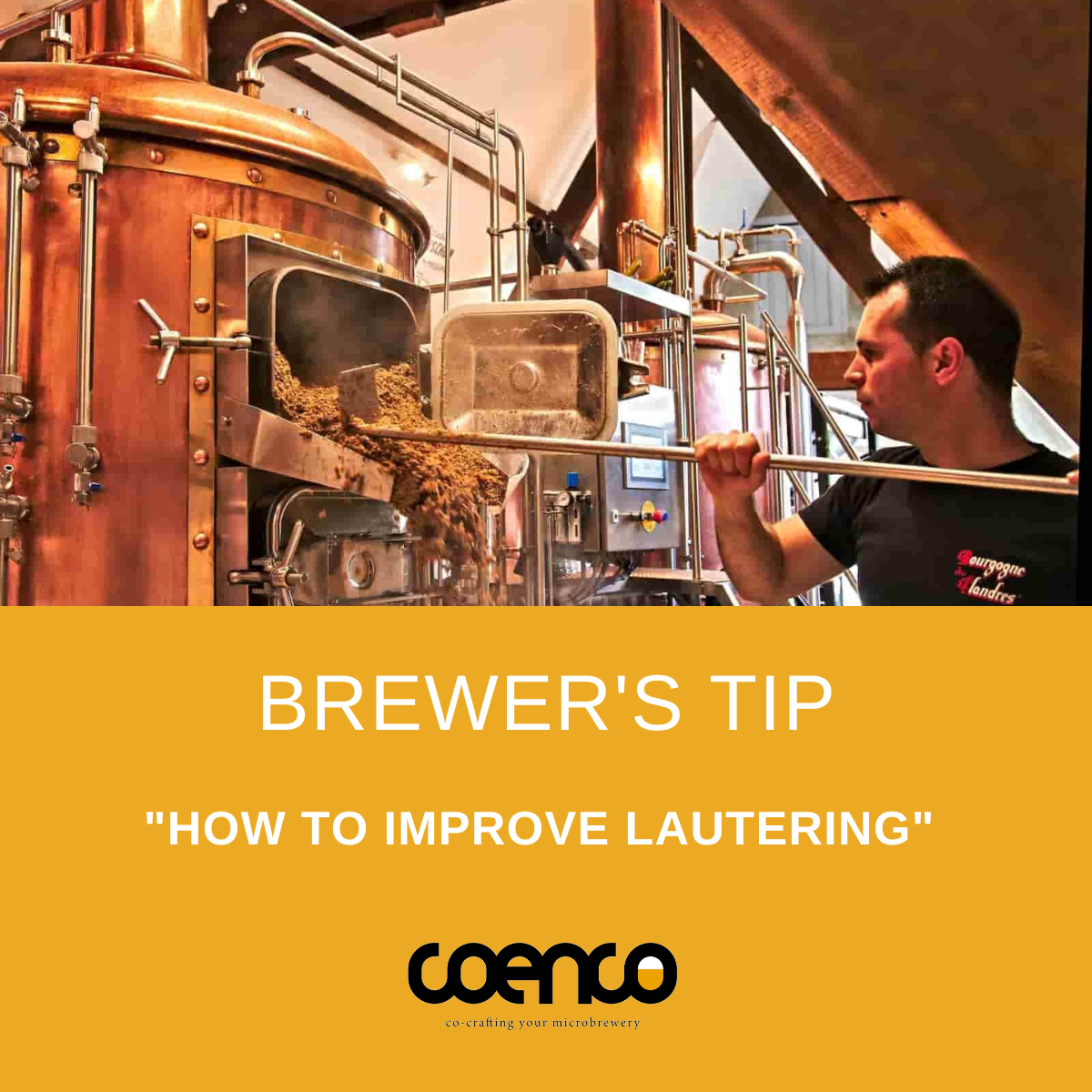Lautering, the step that requires the most attention during the brewing process and where many brewers struggle.
During one of our Masterclasses for the members of the Coenco Family, we discussed lautering with Thomas Vandelanotte, head brewer at the Anthony Martin group. By using a step-by-step guide and sharing some tips, we will try to help you get the most out of your lautering, and that in the shortest possible time.
It is important to know that many factors influence lautering and that the end result is a combination of all those factors. In this step-by-step guide, we base ourselves on our Coenco brewhouse with a combined mash/kettle tank and a separate traditional lauter tun.

Step-by-step plan for better lautering:
• First and foremost, ensure a good grinding of the malt. Too fine grinding will cause the filter bed to clog more quickly. Too coarse grinding will result in not extracting all the sugars from the grains, which will result in lower efficiency.
• At the end of the mash process, pre heat up the lauter tun with hot water to avoid a temperature shock when transferring from the mash tank to the lauter tun. You can do this with water from the hot water tank.
• Mash out at 80°C so that you never drop below 78°C during lautering.
• Avoid having air under your filter plate and in your pipes. Submerge them in hot water.
• Do not transfer the mash from the mash tank too quickly so as not to damage the mash/grains. Do it gently.
• Let the mash rest for 5 to 8 minutes so that the filter bed can form properly.
• Do a recirculation until the wort is clear. Only then start lautering to the kettle. If you cannot lauter by gravity, do it at a low flow rate by keeping the pump speed low and possibly throttling the valve at the pump outfeed.
• Control the lautering speed. Start at a low flow rate and gradually increase to a higher flow rate. You do this because the viscosity, due to the greater amount of sugars, is higher at the beginning than at the end of lautering.
Example of lautering speed in a 1000L brewery:
o Start at 150 to 250 L/h (about 20% of the brewhouse capacity/hour)
o Consider gradually increasing the flow rate of the lautering every 5 to 10 minutes
o Depending on the type of beer, end with a speed of 600 to 700 L/h (about 70% of the brewhouse capacity/hour).
• Start rinsing the spent grains as soon as the filter bed becomes visible. The sparge water must be at least 80 to 81°C.
• When rinsing the spent grains, you can cut into the filter bed while adding the sparge water. You do this to avoid channeling and thus achieving a higher efficiency.
• Never let your filter bed run dry. Water has buoyancy and helps the spent grains bed to exert less pressure on the grains and the filter plate. If the buoyancy is lost because the spent grains bed runs dry, the total weight of the spent grains will rest on the filter plate and the filter bed will clog.
• Periodically schedule a moment to add sparge water (80°C). For example, every 10 to 15 minutes. Calculate in advance how much sparge water you need to add.
By performing these steps and tips, it will be possible to get the most out of your lautering!



